Planning an event can be stressful. Promoting one can be just as hectic.
Enter Facebook event response ads.
With over 2 billion active monthly users and multiple audience targeting options, Facebook offers advertisers the perfect platform to promote events to the right audience via Event Response ads.
What are Facebook event response ads?
Facebook Event Response ads help you get more people through the door for your event, including concerts, standup comedy, educational workshops, bootcamps and more. The ads allow you to create an event and target your desired audience directly from your Facebook event page and promote it with photo or video:
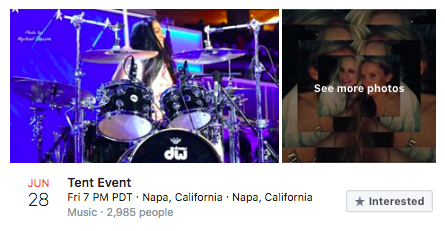
Key benefits & where you see them
Event response ads help you boost awareness for your event, invite your target audience, give them a simple way to join the event, and keep track of how many people have responded to your invitation. This ad type appears in the Facebook feed on both desktop and mobile devices, and the ad unit mimics a typical Facebook event invite asking users to either click “interested” or “going” to RSVP for an event.
The ads are directly linked to the event page and provide a seamless pathway from newsfeed to invite. And since the ads are promoted from the event page, it looks more like a boosted post than a typical ad, which helps with the clickthrough rate.
How do you target audiences for event response ads?
Event response ads also allow you to target people who might be interested in your event and retarget others who’ve expressed interest in the past. Key variables to target users include age, gender, interests, and where they live. When someone RSVPs to your event, the event is automatically added to their Facebook calendar.
It’s best to target two types of audiences:
- A user who would attend your event
- A user who would click the RSVP button on Facebook but may not attend the actual event.
Sometimes these two audiences overlap, and sometimes they don’t. Lookalike audiences can supplement any audience that you might have missed. A Lookalike audience of users that have committed to your event will populate with the type of users who respond to Facebook events, increasing your RSVP user count. For event response campaigns, Facebook searches for users who are most willing to click the “interested” or “going” button. Keep in mind for event response ads; an event RSVP is a much higher ask than a click or a video view.
When a user clicks the event RSVP they are committing to attend instead of watching a 15-second video. So, CPM (cost per mille) isn’t that important of a metric, CTR (click-through rate) is what matters more. Another key metric to follow is Cost per Event Response (spent / event responses received since this determines how much an ad costs.
How much do Facebook event response ads cost?
That answer depends on the average cost for each event response, i.e. the number of people who responded “Interested” or “Going”, attributed to your ads.
The metric is calculated as the total amount spent divided by event responses:
- Amount spent: The estimated total amount of money spent on your campaign, ad set, or ad during its schedule.
- Event responses: The number of people who responded “Interested” or “Going” to your Facebook event.
How do you create event response ads?
With 700 million people using Facebook events each month to promote their events, and 35 million people viewing a public event on Facebook every day, you must know how to create an ad for it to be seen.
The first step is creating a Facebook event page, which are free and easy to create. Then, follow the steps here:
1. Click the Event option on the left side under the “Explore” option:
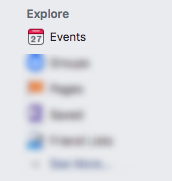
2. Click “Create Event:”
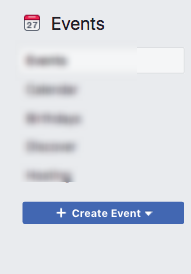
3. Create a public event:
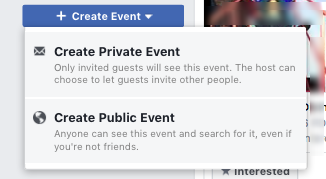
4. Add an event photo and fill in all the required information:
- Name
- Location
- Description
- Category
- Frequency (e.g., occurs once, weekly, or you can customize the date range)
5. Add additional information such as co-hosts, tickets, or event schedules.
6. Click Publish or Save Draft.
7. To schedule your event to publish at a future date and time, click Schedule.
Once you’ve created a Facebook event, you can design an event ad where you select the Traffic, Engagement, or Conversions objectives in Ads Manager. Select the Engagement objective for event response ads since this objective helps generate more RSVPs.
Event response ads ad specs
For a video event response ad make sure to upload the highest resolution source video available without letter or pillar boxing (no black bars). Most file types are supported, but it is recommended to upload H.264 compression, square pixels, fixed frame rate, progressive scan, and stereo AAC audio compression at 128kbps+.
Video
- Video Ratio: 9:16 to 16:9
- Recommended Resolution: Upload the highest resolution video available that meets file size and ratio limits.
- Video File Size: 4GB Max
- Video Length Minimum: 1 second
- Video Length Maximum: 240 Minutes
- Video Captions: Optional but recommended
- Video Sound: Optional but recommended
- Text: 125 characters
- Video thumbnail images with more than 20% text may experience reduced delivery.
- Vertical videos (with aspect ratio taller than 2:3) may be masked to 2:3
- Headline: 25 characters
- Link Description: 30 characters
360 Videos
Facebook provides an interactive and immersive platform for 360° videos:
- Minimum Video Duration: 1 seconds
- Maximum Video Duration: 14,460 seconds
- Maximum Video File Size: 27,306 MB
- Minimum Video File Size: 1,024 bytes
- Minimum Aspect Ratio: 100×400
- Maximum Aspect Ratio: 400×100
Mobile News Feed
- Minimum Video Duration: 1 seconds
- Maximum Video Duration: 14,460 seconds
- Minimum Width: 120 pixels
- Minimum Height: 120 pixels
- Maximum Video File Size: 27,306 MB
- Minimum Video File Size: 1,024 bytes
- Minimum Aspect Ratio: 100×400
- Maximum Aspect Ratio: 400×100
The design recommendations or image event response ads are:
- File type: jpg or png
- Image ratio: 9:16 to 16:9
- Recommended resolution: Upload the highest resolution image available.
- Images with more than 20% text may experience reduced delivery.
- Text: 125 characters
- Image ratio: 1.91:1 to 1:1
- Recommended resolution: at least 1,080 x 1,080px
- Headline: 25 characters
- Link Description: 30 characters
Panoramas or 360 Photos
- Minimum Aspect Ratio: 200×300
- Single Image Ad With Link minimum Width: 476 pixels
- Single Image Ad With Link Minimum Height: 249 pixels
- Minimum Aspect Ratio: 191×100
- Maximum Aspect Ratio: 191×100
Mobile News Feed
- Minimum Aspect Ratio: 200×300
- Single Image Ad With Link Minimum Width: 320 pixels
- Minimum Aspect Ratio: 191×100
- Maximum Aspect Ratio: 191×100
Event response ads best practices
A typical ad includes a headline, an image or video, a short description, and the RSVP CTA button ‘Interested’ or ‘Going’. Here are a few Facebook events response ad examples:
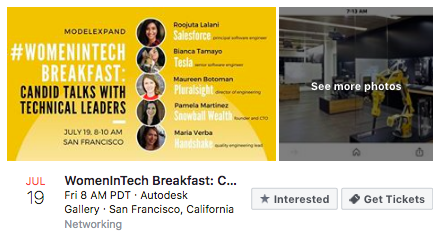
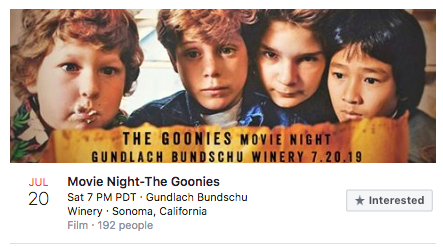
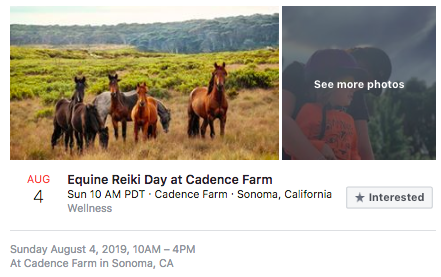
Event ads direct users to the main event page where they can read the details, share the event on their timeline, or invite people they want to go with, and of course purchase tickets.
Here are some best practices to create better, more engaging ads:
1. Send personal invites to users
To increase awareness, sending personal invitations to users you think are highly likely to click the RSVP button is a great way to increase engagement. Direct invites mostly yield an immediate response, and their response could also trigger a newsfeed share on the user’s Facebook page putting the event in front of their friend list as well:
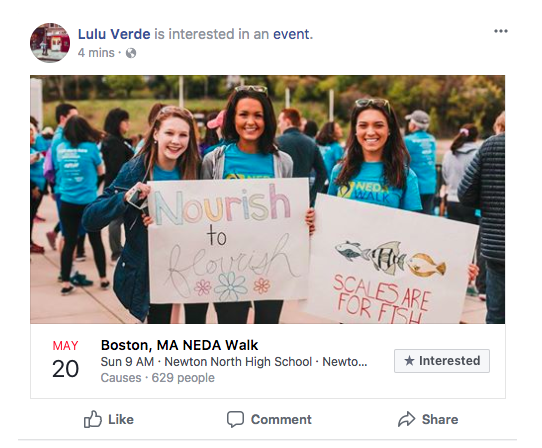
2. Send pre-event notifications
Sending pre-event notifications also encourages users to respond to events. The notifications are generated a week before an event, the day before an event, and the day of an event.
3. Take advantage of email notifications
By default, Facebook sends email notifications about events to users, and while many users have custom email settings, consider sending personalized email notifications:

Get more awareness with event response ads
Facebook event response ads offer advertisers the perfect opportunity to raise awareness about and increase attendance for their event.
Use the ads for B2C or B2B event campaigns and get your event details in front of the right audience. Use the best practices listed in the post to create ads that follow the correct specs and make sure your event response ad gets a response.
Creating more ads on Facebook? Grab a copy of the Instapage Digital Advertising Reference guide and discover even more advertising possibilities on the platform.
